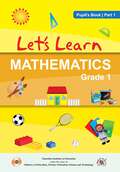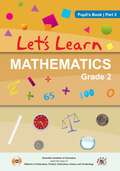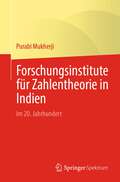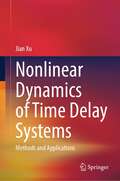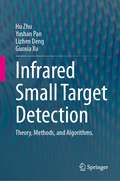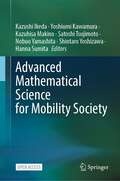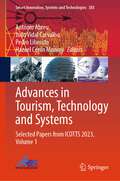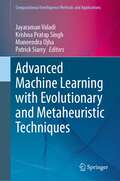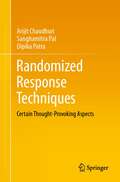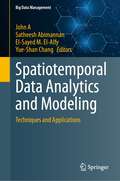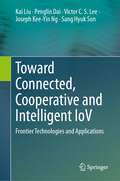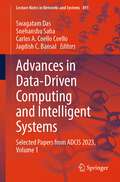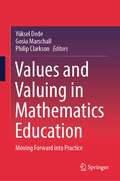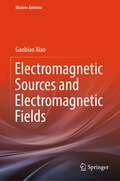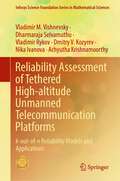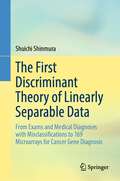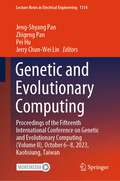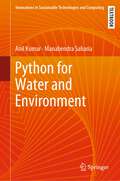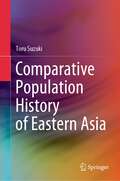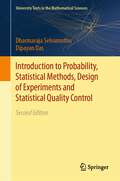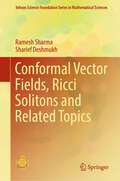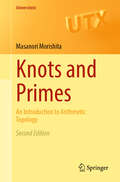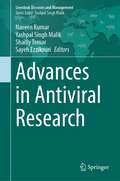- Table View
- List View
Let’s Learn Mathematics Part-1 - Pupil’s Book class 1 - MIE
by Mauritius Institute of EducationThe Mathematics Pupil’s Book Part 1 for Grade 1 offers a comprehensive foundation for young learners in fundamental mathematical concepts aligned with the National Curriculum Framework. Structured around three engaging themes - Home, School, and Games - the textbook incorporates a variety of activities, such as drawing, tracing, writing, coloring, matching, sorting, and comparing objects and numbers. These activities are designed to be interactive and enjoyable, fostering a child-friendly learning environment. Clear learning objectives and outcomes are outlined for each theme and unit, accompanied by continuous assessment and profiling exercises to gauge student progress. The textbook also features an annex with a memory game to reinforce recognition of shapes, colors, and numbers. Overall, it provides a well-rounded and interactive approach to cultivating essential mathematical skills in Grade 1 students.
Let’s Learn Mathematics Part-2 - Pupil's Book class 2 - MIE
by Mauritius Institute of EducationThe Mathematics Grade 6 Pupil’s Book Part 2, designed for students in Mauritius, is a comprehensive textbook developed by the Mauritius Institute of Education and the Ministry of Education and Human Resources. The textbook comprises of units covering diverse mathematical topics like patterns, sequences, powers, time, area, percentages, averages, ratio, proportion, angles, charts, coordinates, line graphs, volume, speed, and problem-solving. Each unit begins with clear learning objectives and concludes with activities to assess students' understanding and skills. The content is reinforced with examples, diagrams, tables, and pictograms to illustrate concepts and methods. Additionally, appendices at the end provide valuable templates for creating 3-D cubes and cuboids, along with examples of shapes and their names. This well-structured textbook aims to enhance students' mathematical proficiency through engaging content and practical exercises.
Forschungsinstitute für Zahlentheorie in Indien: Im 20. Jahrhundert
by Purabi MukherjiDieses Buch versucht, die schrittweise Entwicklung der wichtigsten Forschungsinstitute zur Zahlentheorie in Südindien, Punjab, Mumbai, Bengalen und Bihar zu beschreiben, einschließlich der Gründung des Tata Institute of Fundamental Research (TIFR) in Mumbai, einem bahnbrechenden Ereignis in der Geschichte der Zahlentheorie-Forschung in Indien. Die Forschung zur Zahlentheorie in Indien begann in der modernen Zeit mit dem Auftreten des ikonischen Genies Srinivasa Ramanujan, das Mathematiker auf der ganzen Welt inspirierte. Das Buch diskutiert die nationale und internationale Wirkung der Forschung indischer Zahlentheoretiker und enthält eine sorgfältig zusammengestellte, umfassende Bibliographie bedeutender indischer Zahlentheoretiker des 20. Jahrhunderts. Es ist wichtig für die historische Dokumentation und eine wertvolle Ressource für Forscher auf diesem Gebiet. Das Buch diskutiert auch kurz die Bedeutung der Zahlentheorie in der modernen Mathematik, einschließlich Anwendungen der Ergebnisse indigener Zahlentheoretiker in praktischen Bereichen. Da das Buch aus der Perspektive der Wissenschaftsgeschichte geschrieben ist, wurden technische Fachbegriffe und mathematische Ausdrücke so weit wie möglich vermieden.Die Übersetzung wurde mit Hilfe von künstlicher Intelligenz durchgeführt. Eine anschließende menschliche Überarbeitung erfolgte vor allem in Bezug auf den Inhalt.
Nonlinear Dynamics of Time Delay Systems: Methods and Applications
by Jian XuThis book presents research advancements in the dynamics of systems with time delay conducted by the group led by Professor Jian Xu. Addressing the challenges arising from the joint impact of time delay and nonlinearity, novel theoretical approaches are developed to formulate the nonlinear response of the system. This facilitates the classification of complex nonlinear dynamics, especially the non-resonant and resonant double Hopf bifurcation. In contrast to systems without time delay, time delay systems require specific considerations when identifying system parameters, particularly the time delay. Consequently, inverse problems of systems with time delay are also explored in this book. Moreover, detailed investigations on vibration suppression methods and experimental prototypes based on time delay, such as time delay isolators with quasi-zero stiffness, are conducted. Simultaneously, this book is enriched with a large number of case studies ranging from manufacturing, network science, biology, and public transportation, illuminating the mechanisms of delay-induced nonlinear dynamics in practical applications. This book is suitable for graduate students and researchers who are eager to understand the delay-induced nonlinear dynamics, or technical personnel in whose projects small variations of time delay may cause significant changes in system responses.
Infrared Small Target Detection: Theory, Methods, and Algorithms.
by Hu Zhu Yushan Pan Lizhen Deng Guoxia XuUncover the secrets of cutting-edge research in “Infrared Small Target Detection,” a crucial resource that delves into the dynamic world of infrared imaging and detection algorithms. This comprehensive book is an indispensable gem for the research community, offering a profound introduction to the theory, methods, and algorithms underlying infrared small object detection. As an invaluable guide, this book explores diverse models and categories of infrared small object detection algorithms, providing meticulous descriptions and comparisons of their strengths and limitations. Perfectly tailored for researchers, practitioners, and students with a passion for infrared imaging and detection, this book equips readers with the necessary knowledge to embark on groundbreaking investigations in this field.Readers can particularly be drawn to the book's methods, results, and topics, encompassing diverse categories of infrared small object detection algorithms and their corresponding advantages and disadvantages. The book also imparts foundational knowledge in mathematical morphology, tensor decomposition, and deep learning, enabling readers to grasp the underlying principles of these advanced algorithms. Experience the key benefits of “Infrared Small Target Detection” as readers gain a profound understanding of theory, methods, and algorithms tailored to infrared small object detection. The comprehensive descriptions and comparisons of various algorithm categories empower readers to select the perfect algorithms for their specific applications. Unlock the potential of this groundbreaking resource with a basic understanding of mathematics, statistics, and image processing. Some familiarity with infrared imaging and detection proves advantageous in fully immersing oneself in the wealth of knowledge presented within these pages.
Basic Immunology and Its Clinical Application (Advances in Experimental Medicine and Biology #1444)
by Mitsuru MatsumotoThis book overviews ongoing and upcoming clinical applications of basic immunology. Recent advances in our knowledge of immunology coupled with new technologies have aided in the development of efficient cancer immunotherapy, as well as the control of emerging microorganisms such as SARS-CoV-2. However, knowledge of basic immunology has not been fully utilized even after the discoveries of immune checkpoint inhibition for cancer immunotherapy and the development of mRNA vaccination against SARS-CoV-2. There is still room for improving the clinical application of basic immunology. The book summarizes the achievements in clinical applications of basic immunology and highlights what can be further extended to make immunology a more practical human science. Basic immunology and its clinical applications are two wheels of the same cart in the immunology field, which aids in the development of more efficient cancer immunotherapy and rapid control of infectious diseases against microorganisms, including new viruses and classical toxoplasmosis. The exploration of ongoing and upcoming applications of basic immunology in this book makes it a useful resource for immunologists, physicians, molecular and genome biologists, bioinformaticians, and students in these fields.
Advanced Mathematical Science for Mobility Society
by Kazushi Ikeda Yoshiumi Kawamura Kazuhisa Makino Satoshi Tsujimoto Nobuo Yamashita Shintaro Yoshizawa Hanna SumitaThis open access book presents the mathematical methods for huge data and network analysis.The automotive industry has made steady progress in technological innovations under the names of Connected Autonomous-Shared-Electric (CASE) and Mobility as a Service (MaaS). Needless to say, mathematics and informatics are important to support such innovations. As the concept of cars and movement itself is diversifying, they are indispensable for grasping the essence of the future mobility society and building the foundation for the next generation. Based on this idea, Research unit named "Advanced Mathematical Science for Mobility Society" was established at Kyoto University as a base for envisioning a future mobility society in collaboration with researchers led by Toyota Motor Corporation and Kyoto University.This book contains three main contents.1. Mathematical models of flow2. Mathematical methodsfor huge data and network analysis3. Algorithm for mobility societyThe first one discusses mathematical models of pedestrian and traffic flow, as they are important for preventing accidents and achieving efficient transportation. The authors mainly focus on global dynamics caused by the interaction of particles. The authors discuss many-body particle systems in terms of geometry and box-ball systems. The second one consists of four chapters and deals with mathematical technologies for handling huge data related to mobility from the viewpoints of machine learning, numerical analysis, and statistical physics, which also includes blockchain techniques. Finally, the authors discuss algorithmic issues on mobility society. By making use of car-sharing service as an example of mobility systems, the authors consider how to construct and analyze algorithms for mobility system from viewpoints of control, optimization, and AI.
Advances in Tourism, Technology and Systems: Selected Papers from ICOTTS 2023, Volume 1 (Smart Innovation, Systems and Technologies #383)
by António Abreu João Vidal Carvalho Pedro Liberato Hazael Cerón MonroyThis book features a collection of high-quality research papers presented at the International Conference on Tourism, Technology and Systems (ICOTTS 2023), held at Anáhuac University, Bacalar, Mexico, from 2 to 4 November 2023. The book is divided into two volumes, and it covers the areas of technology in tourism and the tourist experience, generations and technology in tourism, digital marketing applied to tourism and travel, mobile technologies applied to sustainable tourism, information technologies in tourism, digital transformation of tourism business, e-tourism and tourism 2.0, big data and management for travel and tourism, geotagging and tourist mobility, smart destinations, robotics in tourism, and information systems and technologies.
Advanced Machine Learning with Evolutionary and Metaheuristic Techniques (Computational Intelligence Methods and Applications)
by Jayaraman Valadi Krishna Pratap Singh Muneendra Ojha Patrick SiarryThis book delves into practical implementation of evolutionary and metaheuristic algorithms to advance the capacity of machine learning. The readers can gain insight into the capabilities of data-driven evolutionary optimization in materials mechanics, and optimize your learning algorithms for maximum efficiency. Or unlock the strategies behind hyperparameter optimization to enhance your transfer learning algorithms, yielding remarkable outcomes. Or embark on an illuminating journey through evolutionary techniques designed for constructing deep-learning frameworks. The book also introduces an intelligent RPL attack detection system tailored for IoT networks. Explore a promising avenue of optimization by fusing Particle Swarm Optimization with Reinforcement Learning. It uncovers the indispensable role of metaheuristics in supervised machine learning algorithms. Ultimately, this book bridges the realms of evolutionary dynamic optimization andmachine learning, paving the way for pioneering innovations in the field.
Randomized Response Techniques: Certain Thought-Provoking Aspects
by Arijit Chaudhuri Sanghamitra Pal Dipika PatraThis book presents an up-to-date perspective on randomized response techniques (RRT). It discusses the most appropriate and efficient procedures of RRT for analysing data from queries dealing with sensitive and confidential issues, including the treatment of infinite and finite population setups. The book aims to spark a renewed interest among sampling experts who may have overlooked RRT. By addressing the missing topics and incorporating a wide range of contributors' works, it seeks to foster an appreciative academic environment and inspire a reformed and amended view of RRT. As the book unfolds, readers will gain valuable insights into the evolving landscape of RRT and its applications, positioning them at the forefront of this engaging field of study.On RRT, the literature has grown immensely since its inception in 1965 by S.L. Warner. Despite several books published on the subject, there are still two crucial topics missing from the existing RRT literature. This book aimsto address these gaps and provide valuable insights to curious readers in the field. The book is mandatory reading for statisticians and biostatisticians, market researchers, operations researchers, pollsters, sociologists, political scientists, economists and advanced undergraduate and graduate students in these areas.
Spatiotemporal Data Analytics and Modeling: Techniques and Applications (Big Data Management)
by John A Satheesh Abimannan El-Sayed M. El-Alfy Yue-Shan ChangWith the growing advances in technology and transformation to digital services, the world is becoming more connected and more complex. Huge heterogeneous data are generated at rapid speed from various types of sensors. Augmented with artificial intelligence and machine learning and internet of things, latent relations, and new insights can be captured helping in optimizing plans and resource utilization, improving infrastructure, and enhancing quality of services. A “spatial data management system” is a way to take care of data that has something to do with space. This could include data such as maps, satellite images, and GPS data. A temporal data management system is a system designed to manage data that has a temporal component. This could include data such as weather data, financial data, and social media data. Some advanced techniques used in spatial and temporal data management systems include geospatial indexing for efficient querying and retrieval of location-based data, time-series analysis for understanding and predicting temporal patterns in datasets like weather or financial trends, machine learning algorithms for uncovering hidden patterns and correlations in large and complex datasets, and integration with Internet of Things (IoT) technologies for real-time data collection and analysis. These techniques, augmented with artificial intelligence, enable the extraction of latent relations and insights, thereby optimizing plans, improving infrastructure, and enhancing the quality of services. This book provides essential technical knowledge, best practices, and case studies on the state-of-the-art techniques of artificial intelligence and machine learning for spatiotemporal data analysis and modeling. The book is composed of several chapters written by experts in their fields and focusing on several applications including recommendation systems, big data analytics, supply chains and e-commerce, energy consumption and demand forecasting,and traffic and environmental monitoring. It can be used as academic reference at graduate level or by professionals in science and engineering related fields such as data science and engineering, big data analytics and mining, artificial intelligence, machine learning and deep learning, cloud computing, and internet of things.
Toward Connected, Cooperative and Intelligent IoV: Frontier Technologies and Applications
by Kai Liu Penglin Dai Victor C.S. Lee Joseph Kee-Yin Ng Sang Hyuk SonThis book offers a comprehensive introduction to technological advances in Internet of Vehicles (IoV), including vehicular communications, vehicular system architectures, data dissemination algorithms, resource allocation schemes, and AI-enabled applications. It focuses on the state-of-the-art IoV with regard to three major directions, namely networking, cooperation, and intelligence, including advanced wireless communication technologies, algorithm theory, optimization mechanisms, and AI technologies. In addition, the book includes a number of case studies with system prototype implementation and hands-on experiments in IoV, making it suitable both as a technical reference work for professionals and as a textbook for graduate students.
Advances in Data-Driven Computing and Intelligent Systems: Selected Papers From Adcis 2022, Volume 1 (Lecture Notes In Networks And Systems Ser. #698)
by Swagatam Das Snehanshu Saha Carlos A. Coello Coello Jagdish C. BansalThe Bergman Kernel and Related Topics: Hayama Symposium on SCV XXIII, Kanagawa, Japan, July 2022 (Springer Proceedings in Mathematics & Statistics #447)
by Kengo Hirachi Takeo Ohsawa Shigeharu Takayama Joe KamimotoThis volume consists of 15 papers contributing to the Hayama Symposium on Complex Analysis in Several Variables XXIII, which was dedicated to the 100th anniversary of the creation of the Bergman kernel. The symposium took place in Hayama and Tokyo in July 2022. Each article is closely related to the Bergman kernel, covering topics in complex analysis, differential geometry, representation theory, PDE, operator theory, and complex algebraic geometry. Specifically, some papers address the L2 extension operators from a newly opened viewpoint after solving Suita's conjecture for the logarithmic capacity. They are also continuations of quantitative solutions to the openness conjecture for the multiplier ideal sheaves. The study involves estimates for the solutions of the d-bar equations, focusing on the existence of compact Levi-flat hypersurfaces in complex manifolds. The collection also reports progress on various topics, including the existence of extremal Kähler metrics on compact manifolds, Lp variants of the Bergman kernel, Wehrl-type inequalities, homogeneous Kähler metrics on bounded homogeneous domains, asymptotics of the Bergman kernels, and harmonic Szegő kernels and operators on the Bergman spaces and Segal-Bargmann spaces. Some of the papers are written in an easily accessible way for beginners. Overall, this collection updates how a basic notion provides strong insights into the internal relationships between independently found phenomena.
Values and Valuing in Mathematics Education: Moving Forward into Practice
by Yüksel Dede Gosia Marschall Philip ClarksonThis book is a follow-up to 'Values and Valuing in Mathematics Education: Scanning and Scoping the Territory' (2019, Springer). This book adds a critical emphasis on practice and fosters thinking concerning positive mathematical well-being, engagement, teacher noticing, and values alignment among a range of critical notions that intersect with values and valuing. Values and valuing play a key role in many aspects of education, such as assessment, planning, classroom interactions, choosing tasks, and general well-being. What one values and finds important in the learning and teaching of mathematics operates within the intersection of all social, cognitive, and affective aspects of school pedagogy, making values a significant holistic factor in education. The chapters explore potential teaching strategies that enhance the understanding of the central place of values in mathematics itself as a subject, as well as how values impact how mathematics is used withinsociety. This book includes examples of strategies for facilitating students’ meaningful engagement with, and conscious learning of, values when engaging in mathematical thinking and doing.
Electromagnetic Sources and Electromagnetic Fields (Modern Antenna)
by Gaobiao XiaoThis book presents a modified spherical harmonic expansion method in which the electromagnetic fields and their sources are expanded with the same set of spherical vector basis functions in a similar procedure. Explicit expressions for the electromagnetic fields, potentials, energies, and the related Green’s functions are derived for the spherical modes in both frequency domain and time domain. Based on the formulation, the relationships between the electromagnetic sources, the electromagnetic far fields, and the electromagnetic near fields are clearly revealed. In particular, a nonuniform transmission line model is developed for intuitively characterizing the total radiation process. The introduction of the cutoff radius and the cutoff mode degree provides a simple reference for determining the numbers of degrees of freedom of the fields associated with sources in a bounded region. Based on the theory, an efficient hybrid method for synthesizing antenna arrays with complex footprints is proposed and demonstrated with several numerical examples. Effective algorithms are also developed for reconstructing the radiating part of the current sources.This book is intended for researchers, engineers, and graduate students who are interested in studying the energy transfer in electromagnetic radiation, synthesis and measurement of antenna arrays, and applications of inverse electromagnetic source problems.
Reliability Assessment of Tethered High-altitude Unmanned Telecommunication Platforms: k-out-of-n Reliability Models and Applications (Infosys Science Foundation Series)
by Vladimir M. Vishnevsky Dharmaraja Selvamuthu Vladimir Rykov Dmitry V. Kozyrev Nika Ivanova Achyutha KrishnamoorthyThis book provides a systematic presentation of the major results in the field of the theory of k-out-of-n systems obtained in recent years and their applications for the reliability assessment of high-altitude unmanned platforms. Mathematical models, methods, and algorithms, presented in the book, will make a significant contribution to the development of reliability theory and the theoretical foundations of unmanned UAV-based aerial communications networks in the framework of the concept of creating the 5G and beyond networks. The book gives a description of new mathematical methods and approaches (based on decomposable semi-regenerative processes, simulation and machine learning methods, and inventory models) to the study of the complex k-out-of-n systems, which makes it possible to carry out numerical calculations of reliability indicators. Organized into five chapters, each chapter begins with a summary of the main definitions andresults contained in the chapter. The content of this book is based on the original results developed by the authors, many of which appear for the first time in book form.
The First Discriminant Theory of Linearly Separable Data: From Exams and Medical Diagnoses with Misclassifications to 169 Microarrays for Cancer Gene Diagnosis
by Shuichi ShinmuraThis book deals with the first discriminant theory of linearly separable data (LSD), Theory3, based on the four ordinary LSD of Theory1 and 169 microarrays (LSD) of Theory2. Furthermore, you can quickly analyze the medical data with the misclassified patients which is the true purpose of diagnoses. Author developed RIP (Optimal-linear discriminant function finding the combinatorial optimal solution) as Theory1 in decades ago, that found the minimum misclassifications. RIP discriminated 63 (=26−1) models of Swiss banknote (200*6) and found the minimum LSD: basic gene set (BGS). In Theory2, RIP discriminated Shipp microarray (77*7129) which was LSD and had only 32 nonzero coefficients (first Small Matryoshka; SM1). Because RIP discriminated another 7,097 genes and found SM2, the author developed the Matryoshka feature selection Method 2 (Program 3), that splits microarray into many SMs. Program4 can split microarray into many BGSs. Then, the wide columnLSD (Revolution-0), such as microarray (n Theory3 shows the surprising results of six ordinary data re-analyzed by Theory1 and Theory2 knowledge. Essence of Theory3 is described by using cephalopelvic disproportion (CPD) data. RIP discriminates CPD data (240*19) and finds two misclassifications unique for cesarean and natural-born groups. CPD238 omitting two patients becomes LSD, which is the first case selection method. Program4 finds BGS (14 vars.) the only variable selection method for Theory3. 32 (=25) models, including BGS, become LSD among (219−1) models. Because Program2 confirms BGS has the minimum average error rate, BGS is the most compact and best model satisfying Occam’s Razor. With this book, physicians obtain complete diagnostic results for disease, and engineers can become a true data scientist, by obtaining integral knowledge ofstatistics and mathematical programming with simple programs.
Genetic and Evolutionary Computing: Proceedings of the Fifteenth International Conference on Genetic and Evolutionary Computing (Volume II), October 6-8, 2023, Kaohsiung, Taiwan (Lecture Notes in Electrical Engineering #1114)
by Jeng-Shyang Pan Zhigeng Pan Pei Hu Jerry Chun-Wei LinThis second volume of conference proceedings contains selected papers presented at ICGEC 2023, the 15th International Conference on Genetic and Evolutionary Computing, held on October 6-8, 2023 in Kaohsiung, Taiwan. The conference is intended as an international forum for the researchers and professionals in all areas of genetic and evolutionary computing. And the readers may know the up-to-date techniques of the mentioned topics, including technologies for next-generation network environments, recent progress in computational electromagnetic dynamics, future cyber security, privacy and forensics for advanced systems, data mining techniques and its applications, optimization models in deep learning and machine learning. It will help readers bring new ideas or apply the designed approaches from the collected papers to their professional jobs.
Python for Water and Environment (Innovations in Sustainable Technologies and Computing)
by Anil Kumar Manabendra SahariaThis textbook delves into the practical applications of surface and groundwater hydrology, as well as the environment. The Part I, "Practical Python for a Water and Environment Professional," guides readers through setting up a scientific computing environment and conducting exploratory data analysis and visualization using reproducible workflows. The Part II, "Statistical Modeling in Hydrology," covers regression models, time series analysis, and common hypothesis testing. The Part III, "Surface and Subsurface Water," illustrates the use of Python in understanding key concepts related to seepage, groundwater, and surface water flows. Lastly, the Part IV, "Environmental Applications," demonstrates the application of Python in the study of various contaminant transport phenomena.
Comparative Population History of Eastern Asia
by Toru SuzukiThis book compares the population history of Japan, Korea, Taiwan, and China to understand such emergent changes as extremely low fertility in Korea and Taiwan, compressed urbanization and a massive diaspora from Korea, early population aging relative to economic development in China, and changing patterns of cross-border migration in the region. After discussing the origin of each ethnic group, premodern population changes are examined by reviewing historical demographic studies including those written in local languages. A new population estimation for premodern Korea is also presented. Topics covered in this book include population growth, fertility, mortality, domestic and cross-border migration, marriage, divorce, and households. Contrasts between economic and population giants (China and Japan), former Japanese colonies (Korea and Taiwan), feudalism and Confucianism (Japan and others), and capitalism and socialism of the same ethnic groups (South and North Korea, Taiwan, and China) provide a fresh view of population dynamics in relation to political, economic, and cultural changes. The population study of Eastern Asia has great importance. If economic development is checked by early and rapid aging, it functions to preserve the conventional Euro-centric world system and Pax Americana. On the other hand, if China succeeds in further development while sustaining a socialist dictatorship, it is a challenge to the authority of liberal democracy. If the institution of marriage remains robust and extramarital births do not increase in Eastern Asia, it implies that an aspect of family change is culturally dependent. This book provides clues to help answer such important questions.
Introduction to Probability, Statistical Methods, Design of Experiments and Statistical Quality Control (University Texts in the Mathematical Sciences)
by Dharmaraja Selvamuthu Dipayan DasThis revised book provides an accessible presentation of concepts from probability theory, statistical methods, the design of experiments, and statistical quality control. It is shaped by the experience of the two teachers teaching statistical methods and concepts to engineering students. Practical examples and end-of-chapter exercises are the highlights of the text, as they are purposely selected from different fields. Statistical principles discussed in the book have a great relevance in several disciplines like economics, commerce, engineering, medicine, health care, agriculture, biochemistry, and textiles to mention a few.Organised into 16 chapters, the revised book discusses four major topics—probability theory, statistical methods, the design of experiments, and statistical quality control. A large number of students with varied disciplinary backgrounds need a course in basics of statistics, the design of experiments and statistical quality control at an introductory level to pursue their discipline of interest. No previous knowledge of probability or statistics is assumed, but an understanding of calculus is a prerequisite. The whole book also serves as a master level introductory course in all the three topics, as required in textile engineering or industrial engineering.
Conformal Vector Fields, Ricci Solitons and Related Topics (Infosys Science Foundation Series)
by Ramesh Sharma Sharief DeshmukhThis book provides an up-to-date introduction to the theory of manifolds, submanifolds, semi-Riemannian geometry and warped product geometry, and their applications in geometry and physics. It then explores the properties of conformal vector fields and conformal transformations, including their fixed points, essentiality and the Lichnerowicz conjecture. Later chapters focus on the study of conformal vector fields on special Riemannian and Lorentzian manifolds, with a special emphasis on general relativistic spacetimes and the evolution of conformal vector fields in terms of initial data.The book also delves into the realm of Ricci flow and Ricci solitons, starting with motivations and basic results and moving on to more advanced topics within the framework of Riemannian geometry. The main emphasis of the book is on the interplay between conformal vector fields and Ricci solitons, and their applications in contact geometry. The book highlights the fact that Nil-solitons and Sol-solitons naturally arise in the study of Ricci solitons in contact geometry. Finally, the book gives a comprehensive overview of generalized quasi-Einstein structures and Yamabe solitons and their roles in contact geometry. It would serve as a valuable resource for graduate students and researchers in mathematics and physics as well as those interested in the intersection of geometry and physics.
Knots and Primes: An Introduction to Arithmetic Topology (Universitext)
by Masanori MorishitaThis book provides a foundation for arithmetic topology, a new branch of mathematics that investigates the analogies between the topology of knots, 3-manifolds, and the arithmetic of number fields. Arithmetic topology is now becoming a powerful guiding principle and driving force to obtain parallel results and new insights between 3-dimensional geometry and number theory.After an informative introduction to Gauss' work, in which arithmetic topology originated, the text reviews a background from both topology and number theory. The analogy between knots in 3-manifolds and primes in number rings, the founding principle of the subject, is based on the étale topological interpretation of primes and number rings. On the basis of this principle, the text explores systematically intimate analogies and parallel results of various concepts and theories between 3-dimensional topology and number theory. The presentation of these analogies begins at an elementary level, gradually building to advanced theories in later chapters. Many results presented here are new and original.References are clearly provided if necessary, and many examples and illustrations are included. Some useful problems are also given for future research. All these components make the book useful for graduate students and researchers in number theory, low dimensional topology, and geometry.This second edition is a corrected and enlarged version of the original one. Misprints and mistakes in the first edition are corrected, references are updated, and some expositions are improved. Because of the remarkable developments in arithmetic topology after the publication of the first edition, the present edition includes two new chapters. One is concerned with idelic class field theory for 3-manifolds and number fields. The other deals with topological and arithmetic Dijkgraaf–Witten theory, which supports a new bridge between arithmetic topology and mathematical physics.
Advances in Antiviral Research (Livestock Diseases and Management)
by Naveen Kumar Yashpal Singh Malik Shailly Tomar Sayeh EzzikouriThis book illustrates advancements in the sophisticated tools and techniques for discovering and designing new antiviral drugs, identifying approved drugs against new and emerging viruses through large-scale computational virtual screening or drug repurposing approaches, and their evaluation in various in vitro and in vivo models. The chapters also cover the challenges associated with the emergence of antiviral drug resistance and possible ways to counter them. It discusses bioinformatics tools and software and computational approaches for the discovery of antivirals. The books also outline approaches for designing broad-spectrum antivirals effective against viruses by epigenetic- and epitranscriptomic-targeted reprogramming. Further, it provides vital details on the procedures for drug applications, clinical trials, and their regulations. Finally, the book provides a comprehensive yet representative description of advances in antiviral research protocols and methodologies suitablefor antiviral researchers at all career stages, including graduate and postgraduate students and policy-makers.
